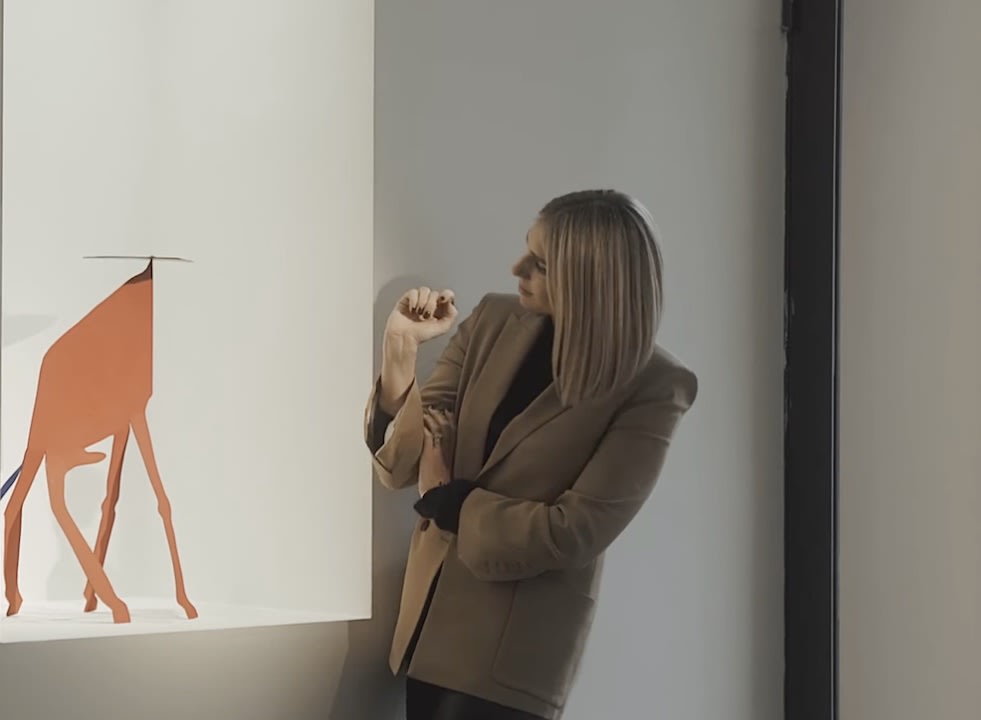Throughout his career, Alexander Calder has changed the very definition of sculpture. Not only did he perpetually invent new shapes, he also created innovative forms of sculpture.
Black Heart was conceived during the year of 1971 as part of the series "Animobiles". The same year two exhibitions were dedicated to this new series, one in Galerie Maeght called "Calder: Stabile and Animobiles" and the other one at Perls Galleries called "Animobiles, Recent Gouaches" in which the artwork was exhibited for the first time. The name "Animobiles" was an expression invented by Calder?s wife and is a combination of the french words Animaux and mobile (mobile animals).
In the presented work flitting from the Surrealist and Abstract circles to the arms of geometric lucidity along with pragmatism, the sculptor offers the elegant shapes of a giraffe. Through this artistic achievement a playful and inventive piece emerges, reminiscing Calder's qualities. The double face of the metal sheet body is composed by a bright red and blue creating a four-dimension effect. The motion of the tail accentuates this impression and brings dynamism along with life to the sculpture. A heart adorned the composition, acting as the shape of face which reinforces the abstract style of the work. Intelligence, beauty, cunning and strength are but a few of the characteristics with which animals have been imbued throughout American art history. However, within his composition, Calder is creating a more complex interpretation of the subject, individually expanding the vision and approach to animal imagery in his art.
The sculpture is a true representation of the artist's creative insight. The composition made of sheet metal recalls Calder's fascination for the circus. Indeed, animals emerge in the artist's body of work since his beginning in 1926 following his illustrations for the Barnum & Baily Circus. The work appears to be as well a synthesis between the stabiles and the mobiles.
Ironic and dynamic, formalist and erudite, all at once "Black Heart" shows Calder at the peak of his career building upon a lifetime of references and sources.
